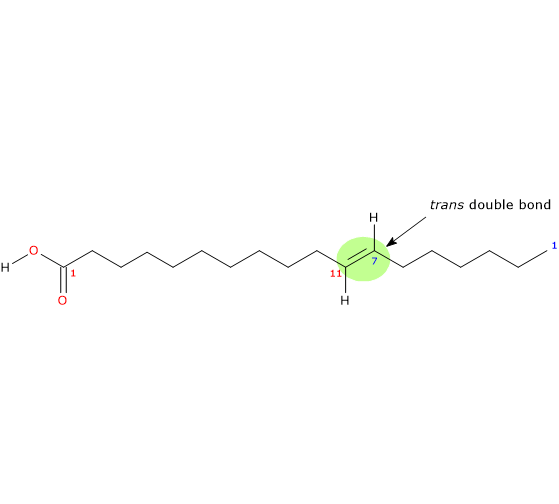Vaccenic acid (18 carbon atoms), from the Latin word vacca, meaning cow, was discovered by Bertram S.H. in 1928 and was the first demonstration of presence of trans isomers of fatty acids in ruminant fats.
It belongs to the group of unsaturated fatty acids, having one trans double bond. It is also a member of the sub-group called long chain fatty acids or LCFA (from 14 to 18 carbon atoms).
Note: shorthand nomenclature cannot be used to name trans fatty acids.
PROPERTIES
Molecular weight: 282.46136 g/mol
Molecular formula: C18H34O2
IUPAC name: (E)-octadec-11-enoic acid
CAS registry number: 693-72-1
PubChem: 5281127

In purified form its melting point is at 44 °C (111.2 °F; 317.15 K).
OTHER NAMES
trans-vaccenic acid
trans-11-octadecenoic acid
(11E)-octadecenoic acid
(E)-11-octadecenoic acid
(11E)-octadec-11-enoic acid
Food sources of vaccenic acid
It is the major trans fatty acid, present as glycerol ester, in ruminant fats, like ox and sheep fats, and in fats of dairy products.
It results from the bacterial hydrogenation of rumenic acid in the first stomach of ruminants. However, it is present in small proportion.
References
- Akoh C.C. and Min D.B. “Food lipids: chemistry, nutrition, and biotechnology” 3th ed. 2008
- Chow Ching K. “Fatty acids in foods and their health implication” 3th ed. 2008